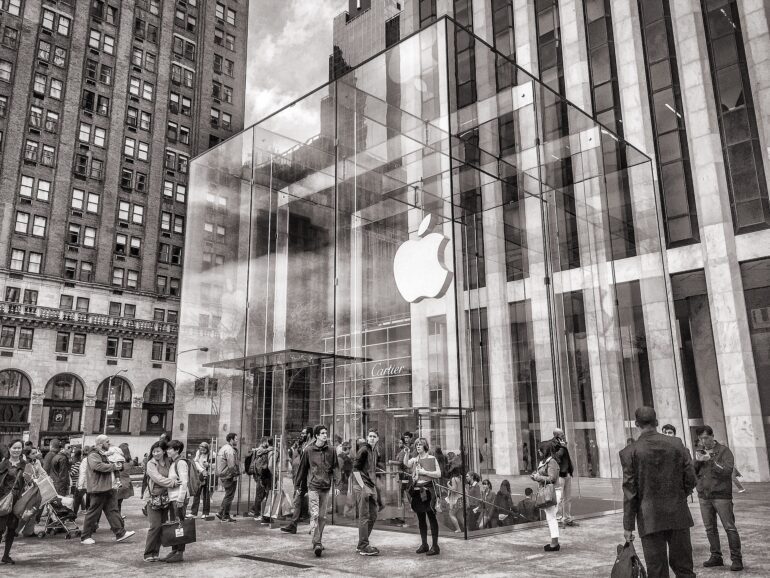TL;DR:
- Apple’s highly anticipated mixed reality headset is set to be unveiled at their annual developer conference.
- The release comes at a time when the industry is buzzing with AI advancements, posing a challenge for Apple to shift the focus.
- Apple aims to showcase its services and devices as significant players in the new world of generative AI tools.
- Market leader Meta’s recent struggles to generate interest in the mixed reality category highlight the need for Apple to captivate consumers.
- The headset is expected to target developers initially, featuring augmented and virtual reality capabilities, a 4K display per eye, and potential integration with Mac devices.
- The raison d’être for Apple’s headset remains unknown, but it must demonstrate innovative uses and address past device challenges.
- Industry opinions differ, with some expressing skepticism while others anticipate significant improvements in comfort, processing power, and content availability.
Main AI News:
In the tech industry, Apple has always managed to steal the limelight with its groundbreaking announcements. However, the imminent release of its mixed reality headset finds itself in a unique position amidst the current AI frenzy, prompting Apple to navigate the need for a strategic shift in focus.
The larger picture reveals that Apple’s annual developer conference, traditionally reserved for showcasing incremental iPhone and Mac updates, now demands more substantial advancements to meet the heightened expectations and challenges of an ever-evolving market.
Since the debut of the iPad in 2010, Apple hasn’t introduced a truly novel device category. Instead, their recent successes, such as AirPods and Apple Watch, have predominantly served as iPhone accessories rather than independent platforms. Despite significant investments in mixed reality and autonomous vehicles, these projects have faced setbacks, leaving Apple without a groundbreaking market-ready product.
Nonetheless, Apple’s artificial intelligence endeavors, including the development of Siri and machine-learning algorithms for fall detection and heart rate monitoring on Apple Watch, showcase their commitment to AI advancements. However, the time has come, ideally at the forthcoming conference, for Apple to demonstrate that its services and devices can play a pivotal role in the realm of generative AI tools.
Microsoft, in its progressive approach, has already incorporated AI into Windows itself, extending beyond just Word and PowerPoint applications. Apple, known for its emphasis on privacy, could potentially leverage this aspect by offering devices that deliver generative AI, ensuring either on-device processing (which may not be entirely feasible at present) or alternative methods that safeguard user data.
The challenge for Apple lies in reigniting interest in the mixed reality headset category and enticing potential buyers to consider investing several thousand dollars in a single device. Meta, a market leader, failed to accomplish this with their Quest Pro device priced at $1,499, even among consumers seeking work-related applications in the metaverse. In contrast, Meta has found success with their Quest 2 and recently announced the $499 Quest 3, which delivers some mixed reality capabilities akin to its pricier counterpart.
Apple’s highly anticipated headset is projected to carry a similar price tag, likely appealing more to developers who will create content for consumers rather than the consumers themselves. Anticipated to resemble ski goggles, the device is expected to support both augmented and virtual reality, offering a 4K display equivalent per eye. Reports from Bloomberg suggest features such as VR FaceTime calls and the ability to function as an external monitor for Macs.
The unanswered question remains: what is the raison d’être for Apple’s headset? Have they devised innovative use cases beyond what Meta has envisioned? Have they managed to address the critical challenges that plagued previous devices? These are the questions that Apple must address during its highly anticipated presentation.
Speaking from a personal standpoint, I find the idea of a metaverse future intriguing, but I am skeptical that Apple, or any other company for that matter, has made substantial strides in overcoming the barriers of size, cost, and battery life that would compel me to make a purchase. At best, Apple needs to create a device that generates enough excitement, showcasing that the future of this category is closer than ever, to capture the attention of developers. That, at the very least, is the minimum expectation Apple must fulfill.
Opinions among industry veterans diverge greatly. Phil Libin, the former CEO of Evernote and a seasoned Apple developer, predicted that few would even discuss the metaverse this year. Reflecting on the potential fusion of the metaverse and Apple’s headset, Libin expressed uncertainty about his own sentiments. On the other hand, Michael Hoffman, a former technical lead for Microsoft’s HoloLens and current head of platform at VR startup Mesmerise, believes that Apple’s headset could be a game-changer, provided it offers notable improvements in comfort, processing power, and content availability.
A metaverse-driven future is on the horizon, and Apple’s upcoming mixed reality headset stands as a significant milestone in this journey. While the challenges are immense, Apple’s innovative prowess and commitment to pushing the boundaries of technology make them a key player in shaping the AI-driven landscape.
Conclusion:
Apple’s upcoming mixed reality headset marks a significant step for the company in an AI-dominated market. As the industry focuses on AI advancements, Apple must successfully navigate the challenge of capturing consumers’ attention and demonstrating the value of its devices and services in the world of generative AI tools. By showcasing innovation, addressing past challenges, and appealing to developers, Apple has the potential to shape the future of mixed reality. However, the market remains cautious, and Apple’s ability to overcome size, cost, and battery life issues will determine the ultimate success of its headset.

